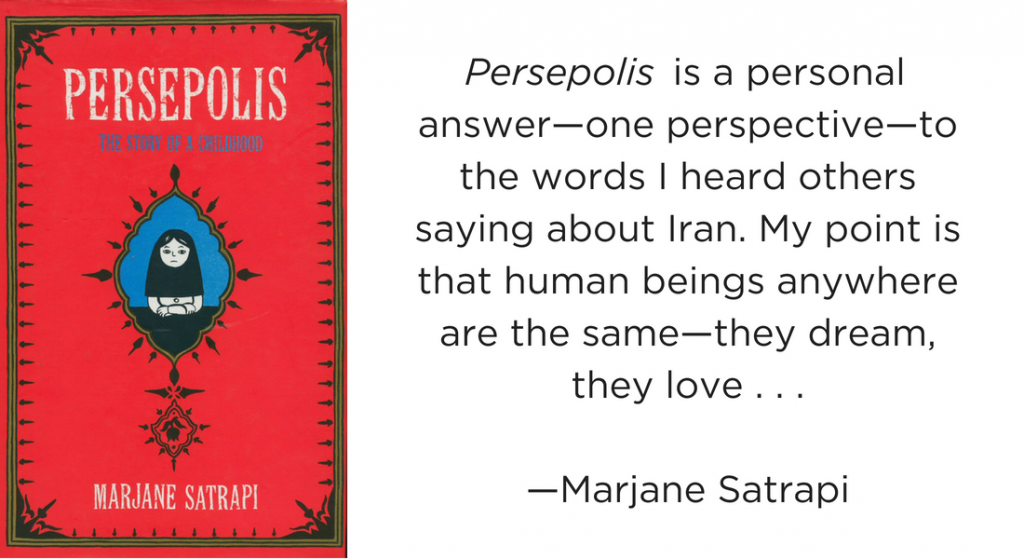November 22 is the birthday of the Iranian-French graphic novelist Marjane Satrapi, born in Rasht, Iran (1969). She wrote the graphic novel Persepolis, an illustrated memoir of her childhood during the Iranian Revolution and her teenage years in Europe, published in four parts. Young Marjane struggles with having to wear a hijab and understanding why family friends have become political prisoners; she also listens to punk rock in her room and flirts with boys at burger joints. Persepolis was a New York Times best-seller and has been translated into 32 languages.
Marjane Satrapi’s identity as an artist was shaped in 1995 when she was given Art Spiegelman’s classic Holocaust comic book, Maus, as a birthday present. She had no idea art could tell stories in such a way. Satrapi then decided the comic book would be her chosen form. Learn more about this text and genre from NCTE and ReadWriteThink.org.
In this lesson, students examine the art and craft of the graphic novel Persepolis by Marjane Satrapi and assess the impact of visual elements on their comprehension of the beginning of the story. The goal of the lesson is to get students started so that they can successfully read and analyze the rest of the book.
The graphic novel Persepolis is set in Iran during the Islamic Revolution. Most students are unaware of the changes associated with the events during that time, but the repercussions of the revolution are still being felt throughout the world. Students in the United States will benefit by gaining background information on Iran, in order to appreciate more fully the experiences of Marjane, the main character of Persepolis. In this lesson, students work in small groups to research a specific topic related to Iran, using online tools to focus their research on relevant and reliable information. After the research is complete, students present their information to the class.
A blog post written by NCTE member Cody Miller details “Using Graphic Novels and Video Essays to Critically Understand Socio-Political Events.” This list includes Persepolis as well as other great titles.
Building Literacy Connections with Graphic Novels: Page by Page, Panel by Panel, edited by James Bucky Carter, is a collection of essays by classroom teachers, demonstrating how to pair graphic novels with classic literature (including both canonical and YA lit) in ways that enrich students’ understanding of both and that thoroughly engage them in literacy.
How do you use this text or other graphic novels with your students?
It is the policy of NCTE in all publications, including the Literacy & NCTE blog, to provide a forum for the open discussion of ideas concerning the content and the teaching of English and the language arts. Publicity accorded to any particular point of view does not imply endorsement by the Executive Committee, the Board of Directors, or the membership at large, except in announcements of policy, where such endorsement is clearly specified.

